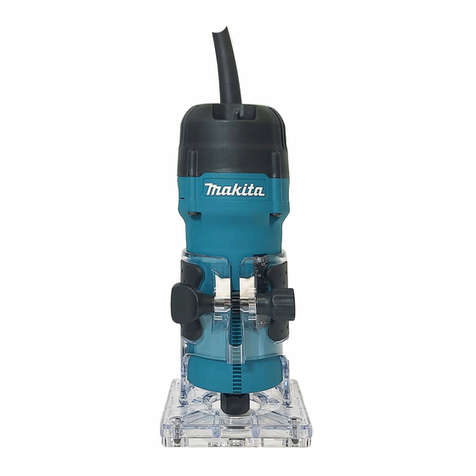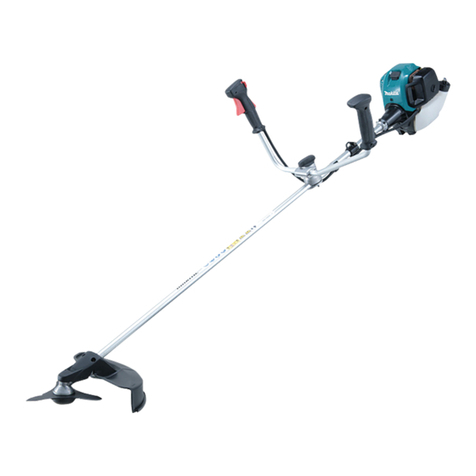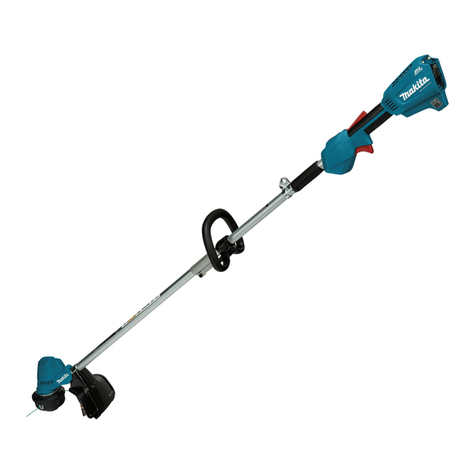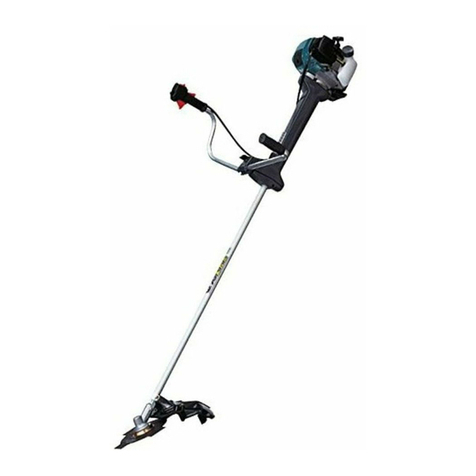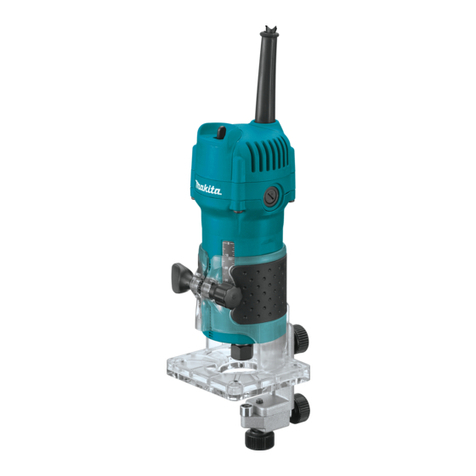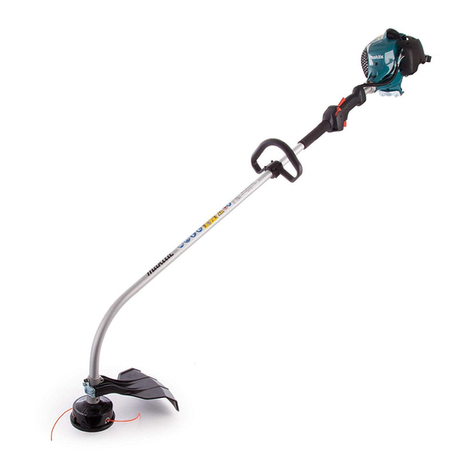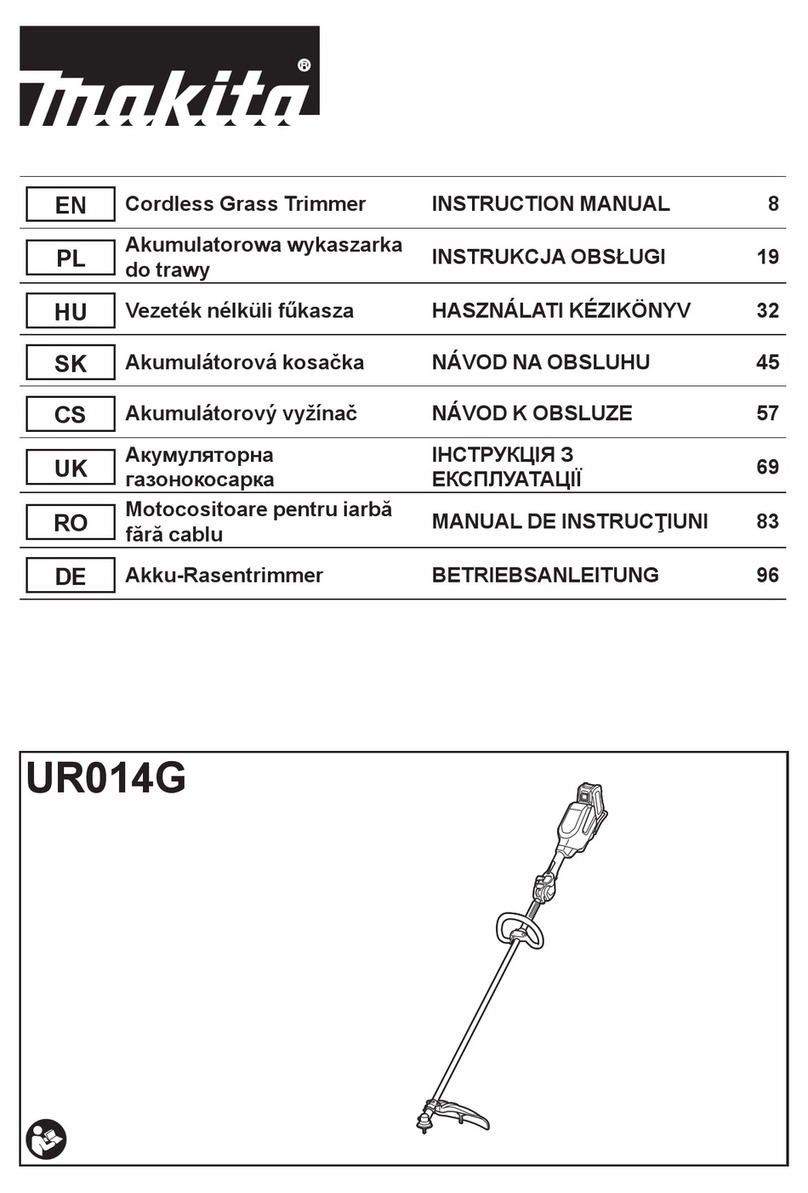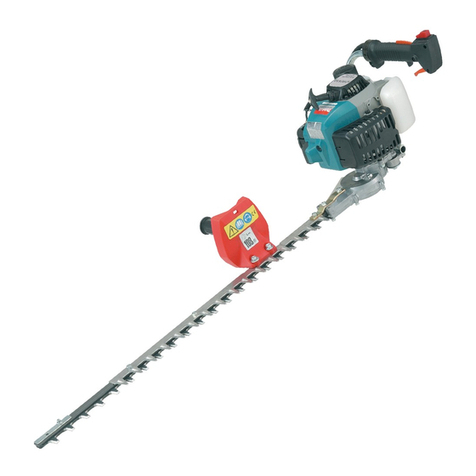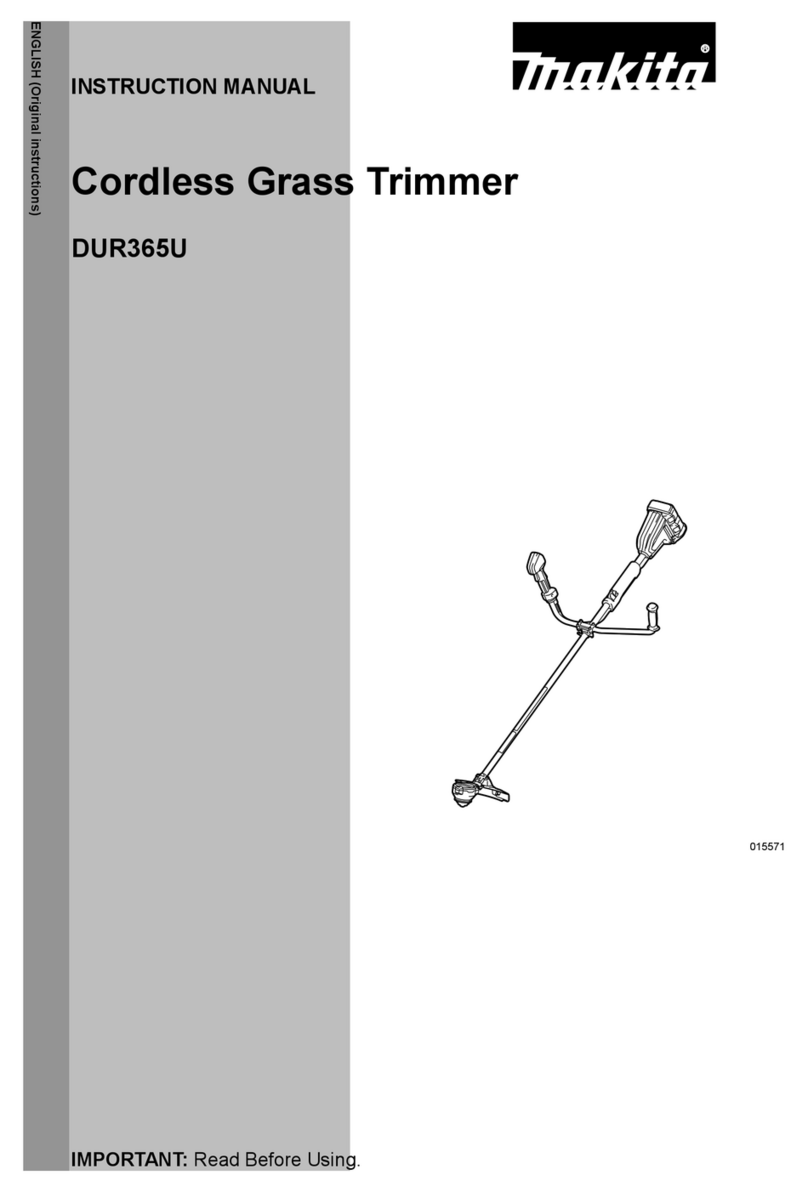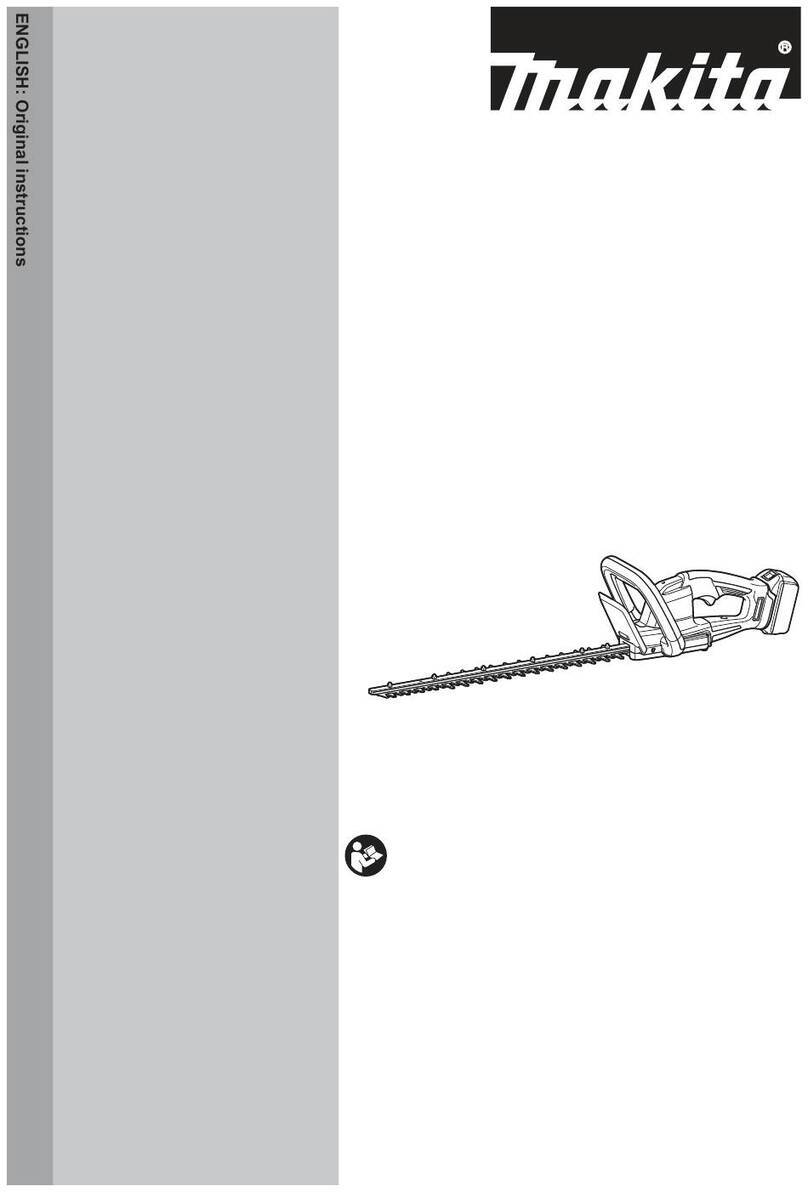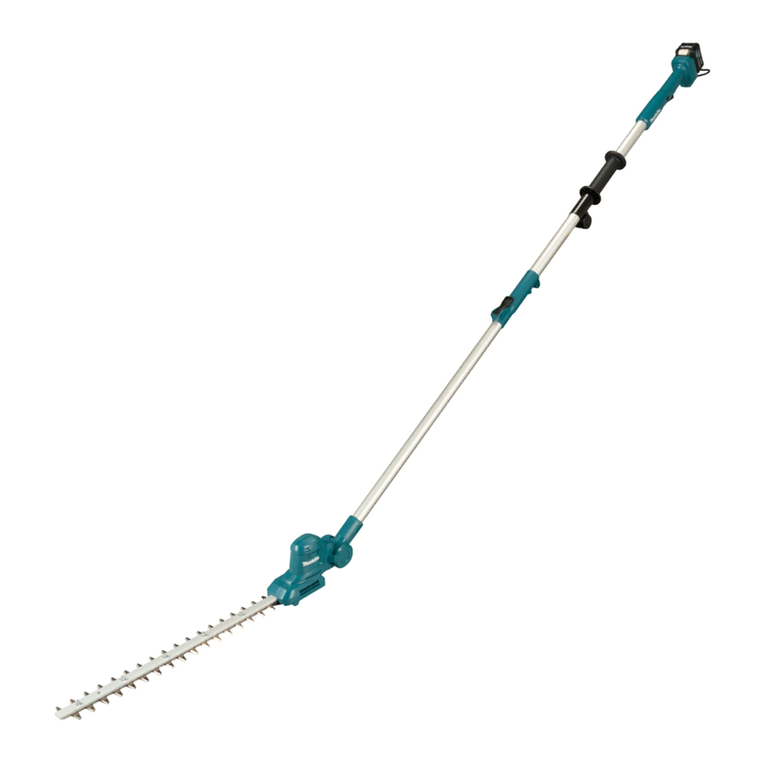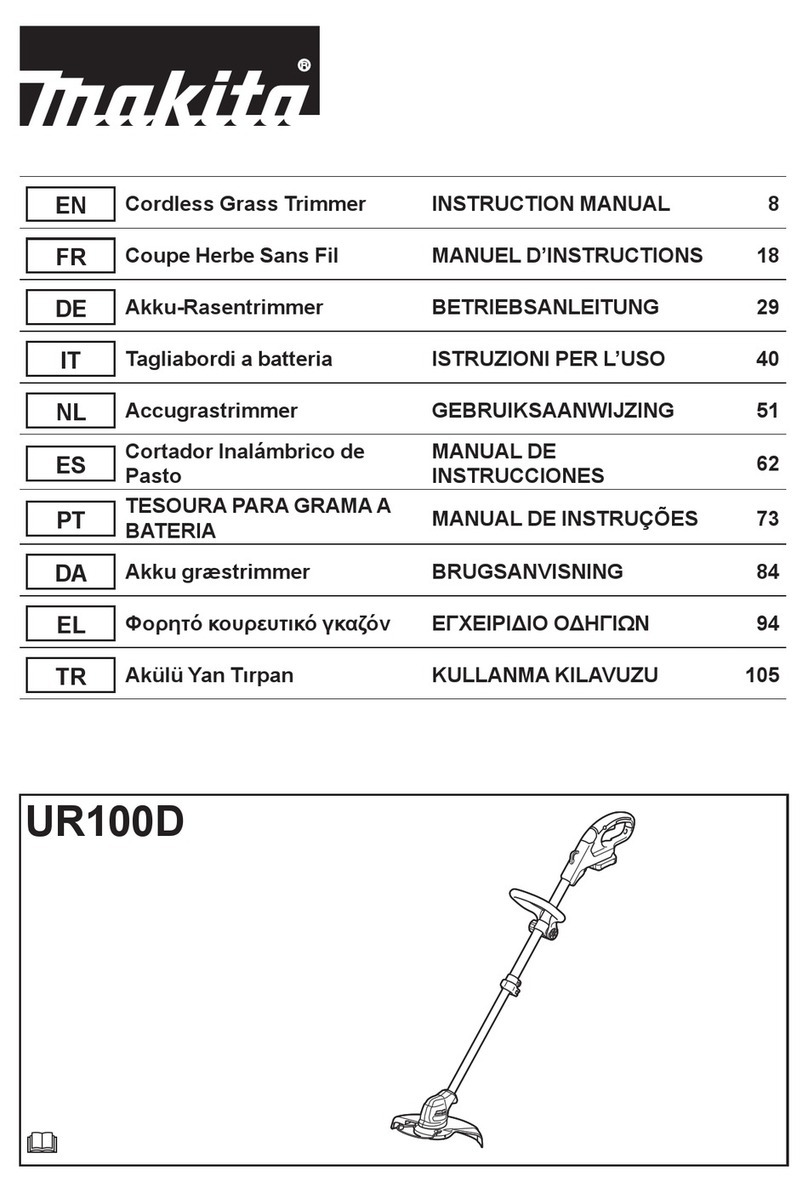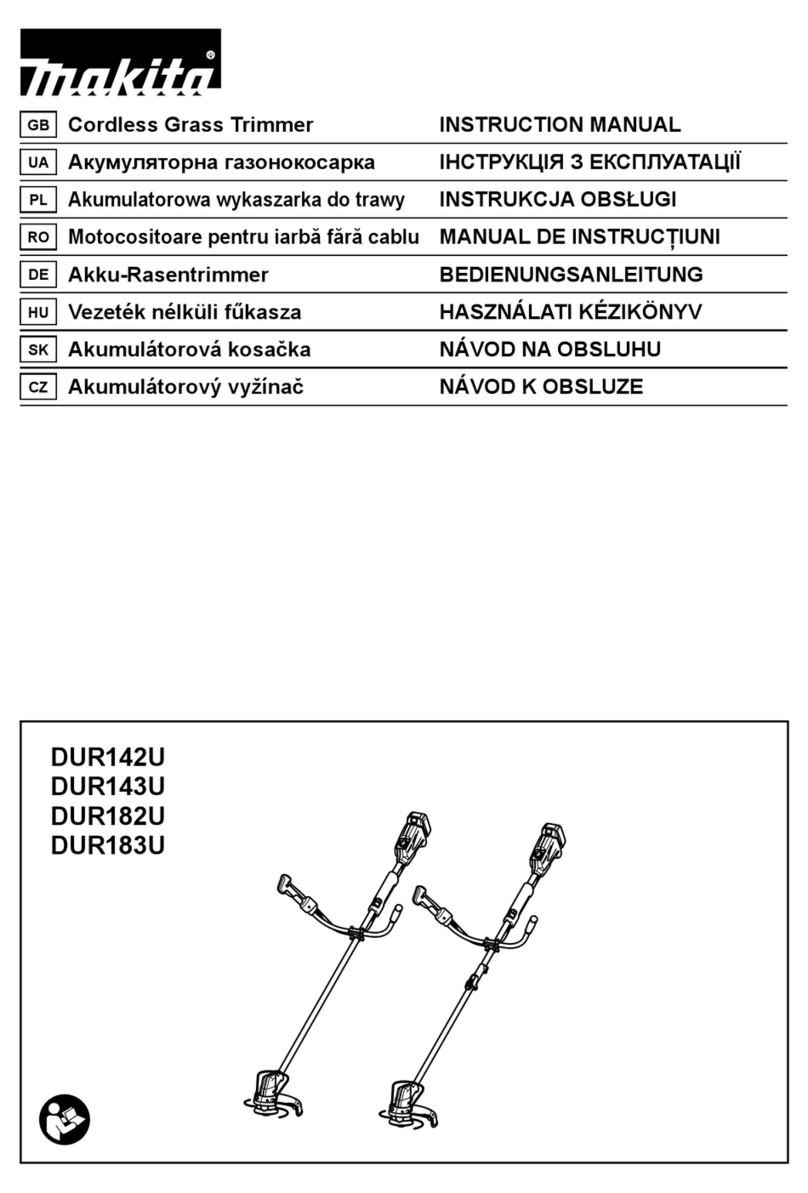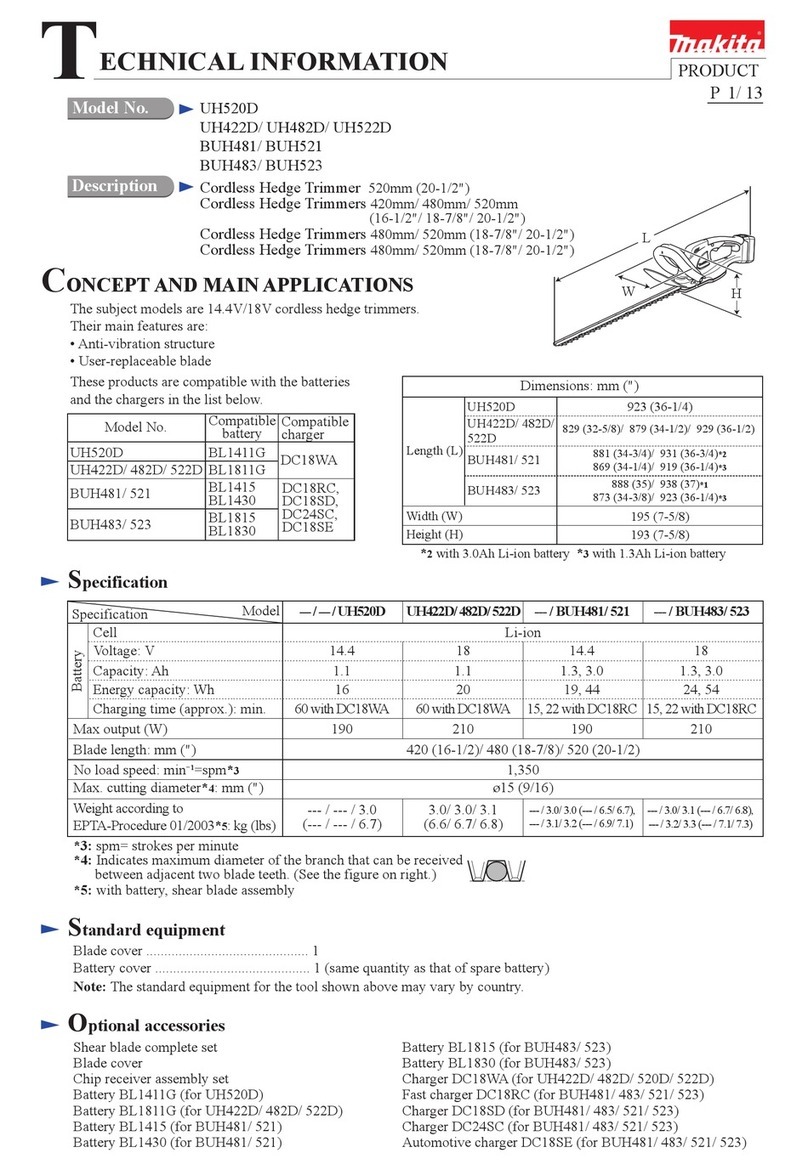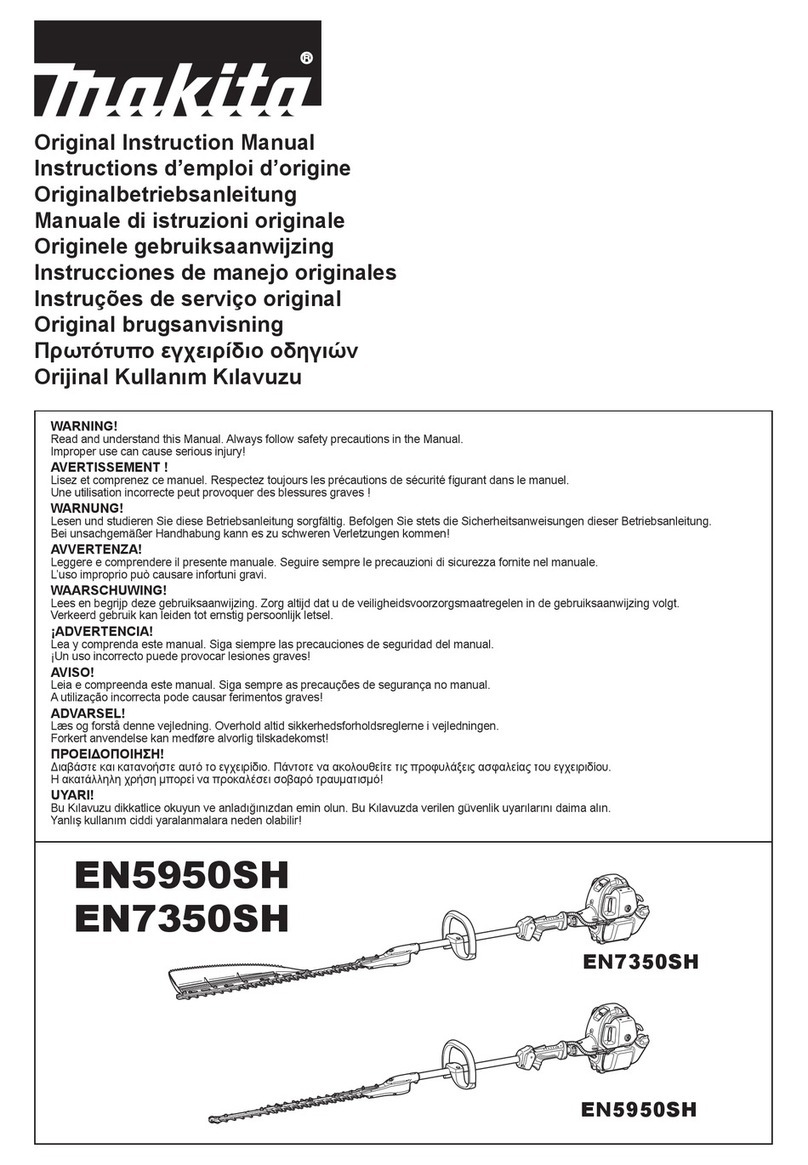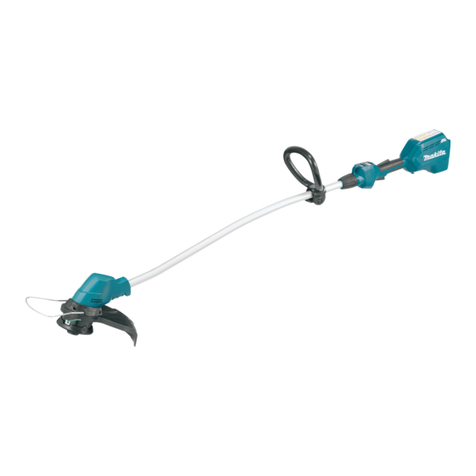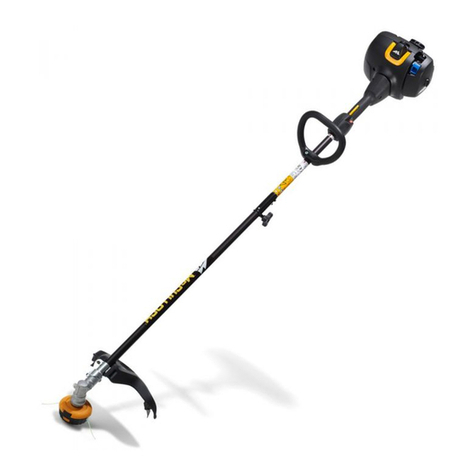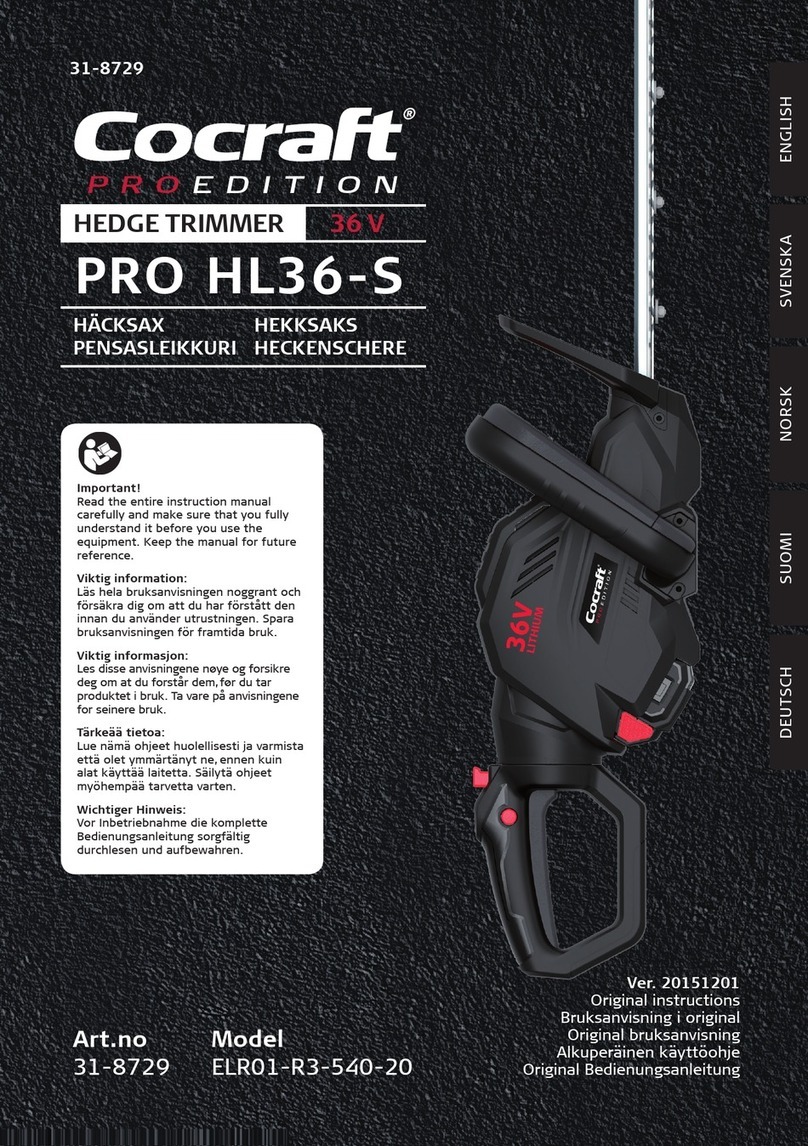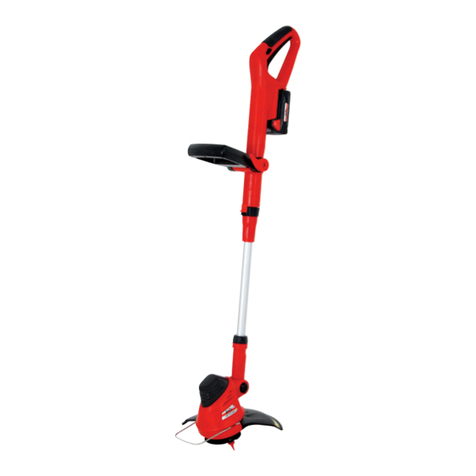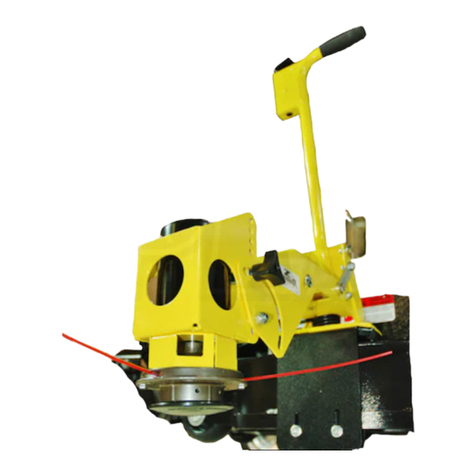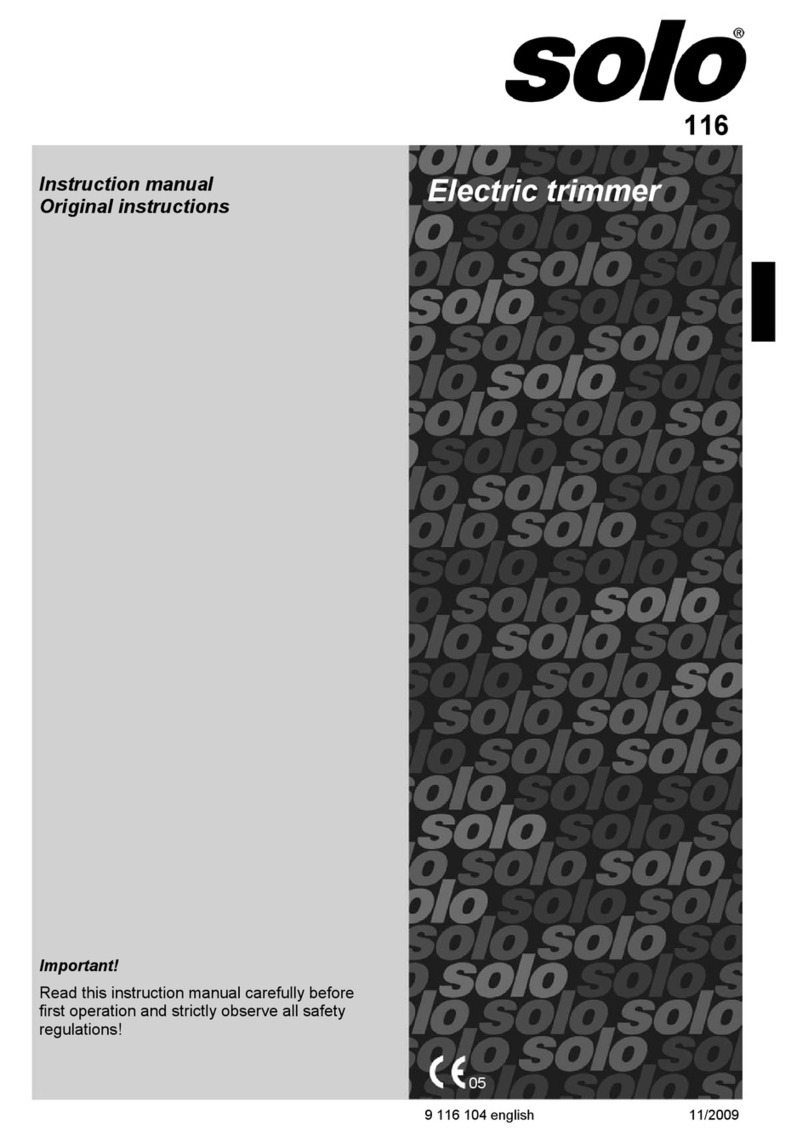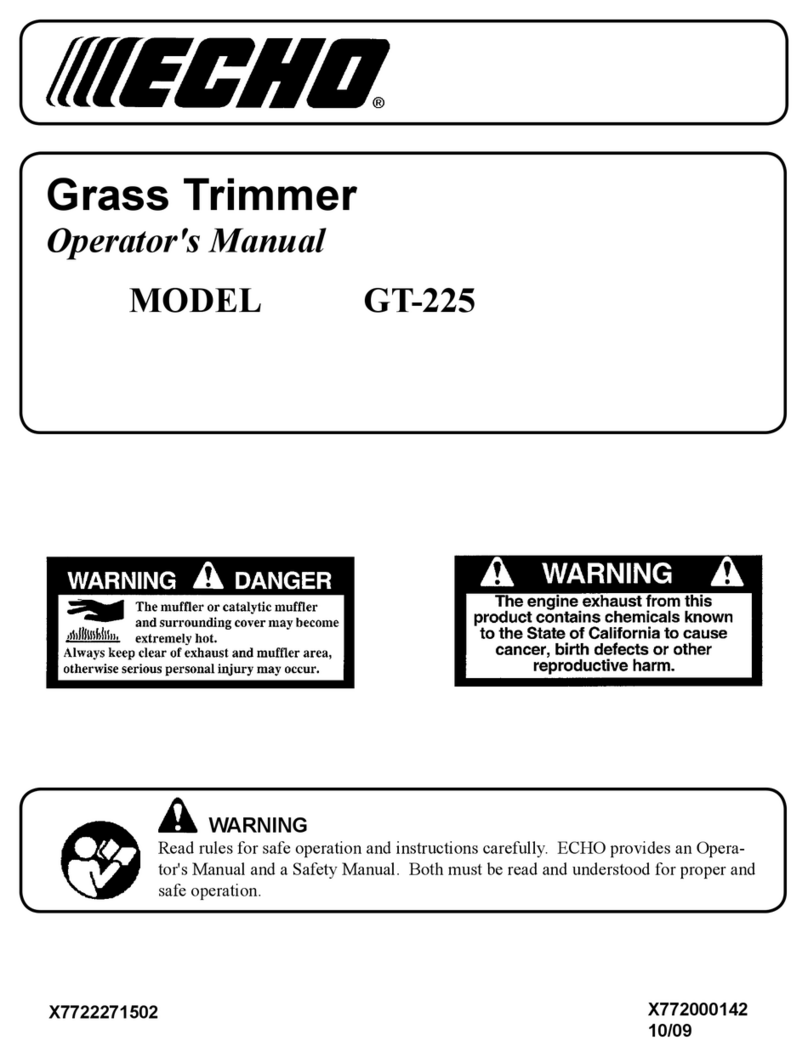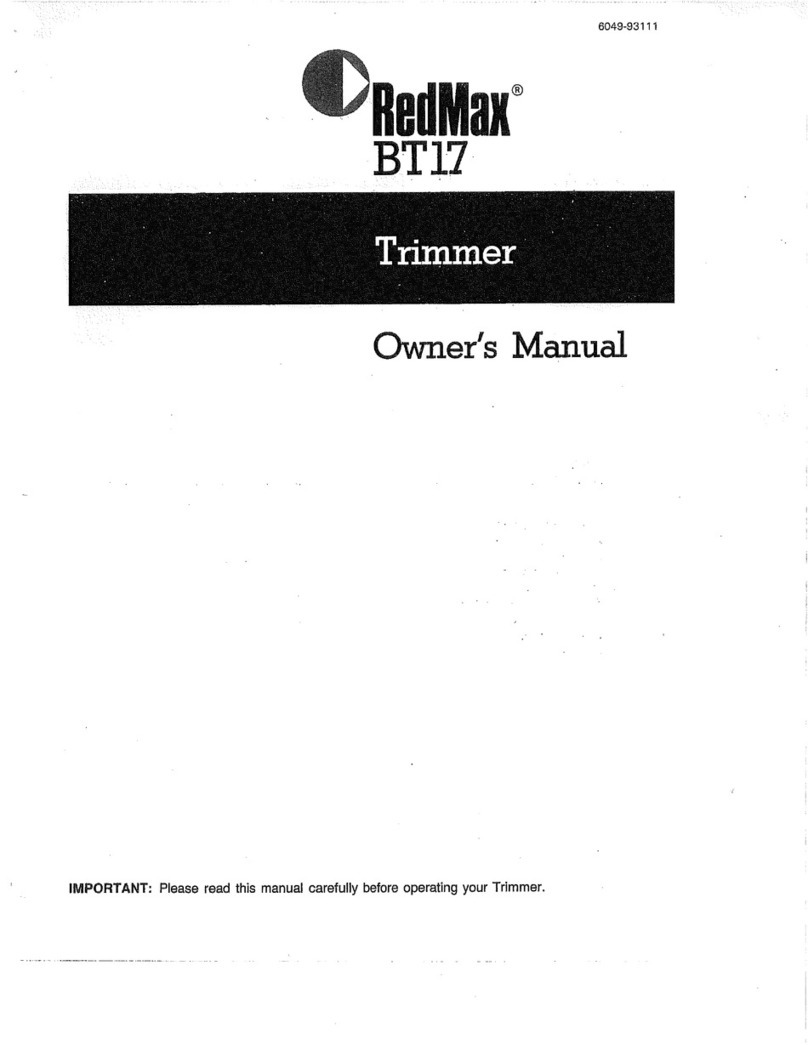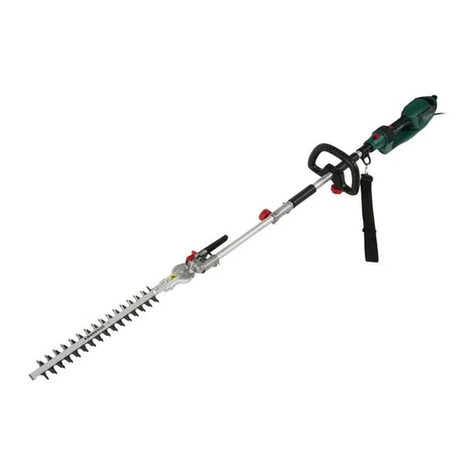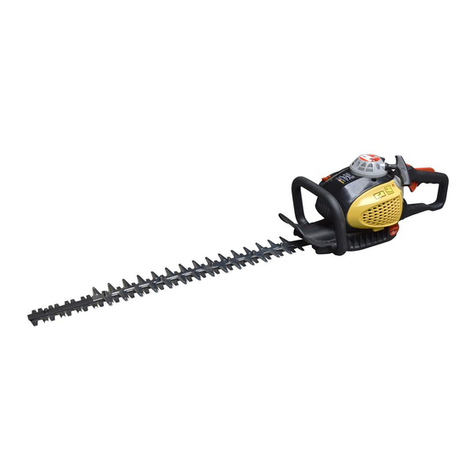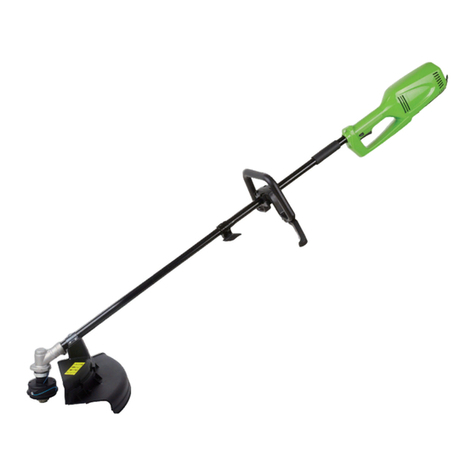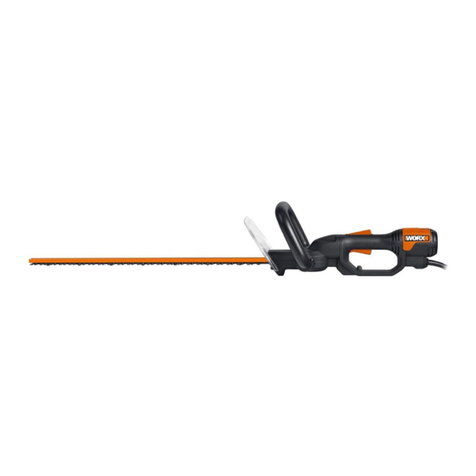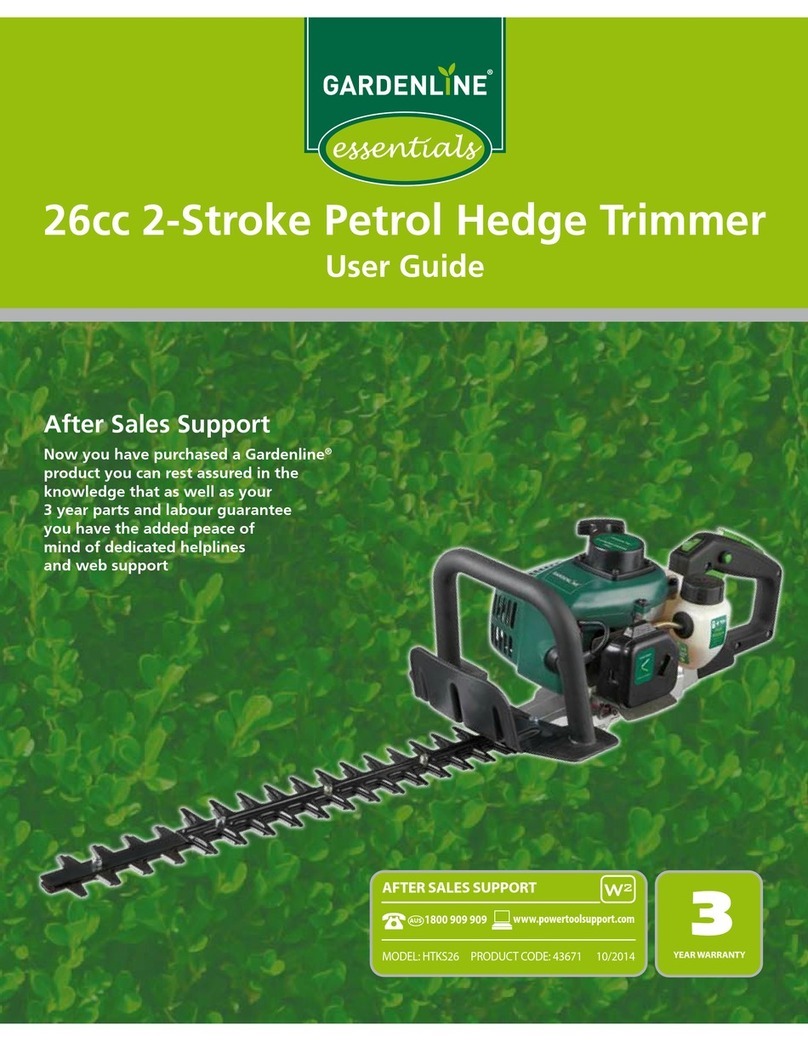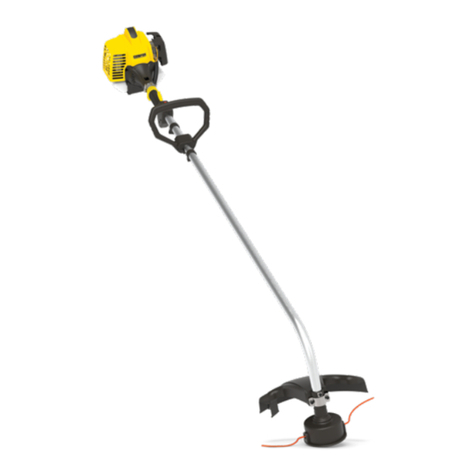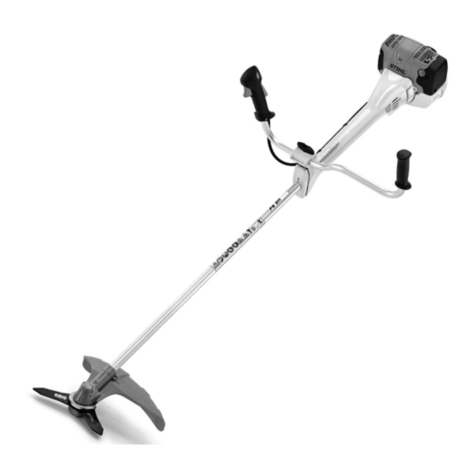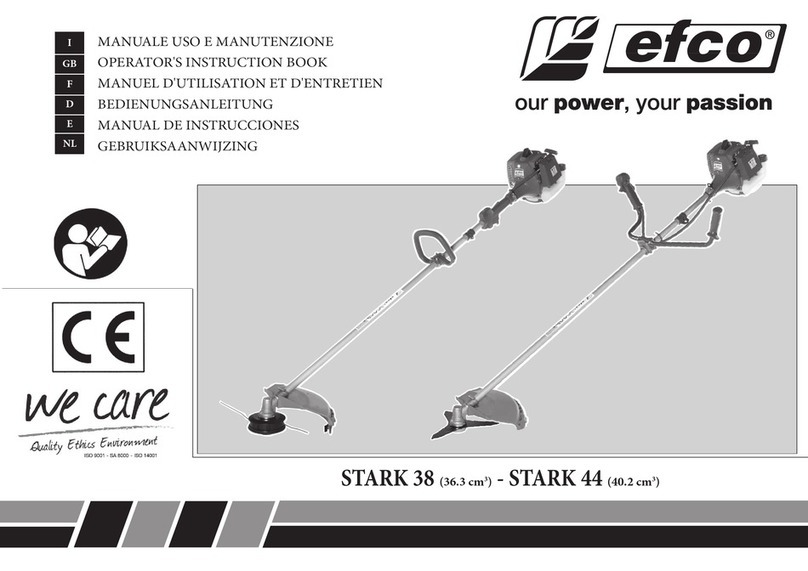
4ENGLISH
Starting up the tool
1. Make sure that there are no children or other
people within a working range of 15 meters
(50 ft), also pay attention to any animals in the
working vicinity. Otherwise stop using the tool.
2. Before use always check that the tool is safe
for operation. Check the security of the nylon
cutting head and the guard and the switch
trigger/lever for easy and proper action. Check
for clean and dry handles and test the on/off
function of the switch.
3.
Check damaged parts before further use of
the tool. A guard or other part that is damaged
should be carefully checked to determine
that it will operate properly and perform its
intended function. Check for alignment of mov-
ing parts, binding of moving parts, breakage of
parts, mounting, and any other condition that
may affect its operation. A guard or other part
that is damaged should be properly repaired
or replaced by our authorized service center
unless indicated elsewhere in this manual.
4. Switch on the motor only when hands and feet
are away from the nylon cutting head.
5. Before starting make sure that the nylon cut-
ting head has no contact with hard objects
such as branches, stones etc. as the nylon
cutting head will revolve when starting.
6. Remove any adjusting key, wrench or blade
cover before turning the power tool on. An
accessory left attached to a rotating part of the
power tool may result in personal injury.
7. Make sure there are no electrical cables, water
pipes, gas pipes etc. that could cause a hazard
if damaged by use of the tool.
Method of operation
1. Only use the tool in good light and visibility.
During the winter season beware of slippery
or wet areas, ice and snow (risk of slipping).
Always ensure a safe footing.
2. Take care against injury to feet and hands from
the nylon cutting head.
3. Never cut above waist height.
4. Never stand on a ladder and run the tool.
5. Never climb up into trees to perform cutting
operation with the tool.
6. Never work on unstable surfaces.
7. Remove sand, stones, nails etc. found within
the working range. Foreign particles may dam-
age the nylon cutting head.
8. Should the nylon cutting head hit stones or
other hard objects, immediately switch off the
motor and inspect the nylon cutting head.
9. Before commencing cutting, the nylon cutting
head must have reached full working speed.
10. During operation always hold the tool with
both hands. Never hold the tool with one hand
during use. Always ensure a safe footing.
11. The nylon cutting head has to be equipped
with the guard. Never run the tool with dam-
aged guards or without guards in place!
12. All protective equipment such as guards sup-
plied with the string trimmer must be used
during operation.
13. Except in case of emergency, never drop
or cast the tool to the ground or this may
severely damage the tool.
14. Never drag the tool on the ground when mov-
ing from place to place, the tool may become
damaged if moved in this manner.
15.
Always remove the battery cartridge from the tool:
— whenever leaving the tool unattended;
— before clearing a blockage;
— before checking, cleaning or working on
the tool;
— whenever the tool starts vibrating
abnormally;
— whenever transporting the tool.
16. Always ensure that the ventilation openings
are kept clear of debris.
17. Cutting elements continue to rotate after the
motor is switched off.
18. Do not operate power tools in explosive atmo-
spheres, such as in the presence of ammable
liquids, gases or dust. Power tools create sparks
which may ignite the dust or fumes.
19. Take a rest to prevent loss of control caused
by fatigue. We recommend to take a 10 to
20-minute rest every hour.
20. Hold the power tool by insulated gripping
surfaces only, because the cutter blade may
contact hidden wiring. Cutter blades contacting
a “live” wire may make exposed metal parts of the
power tool “live” and could give the operator an
electric shock.
21. Do not use the tool on steep slopes.
22. The shoulder harness must be used during
operation, if supplied with the tool.
Maintenance instructions
1. The condition of the nylon cutting head, pro-
tective devices must be checked before com-
mencing work.
2. Turn off the motor and remove the battery
cartridge before carrying out maintenance,
replacing the nylon cutting head or nylon cord
and cleaning the tool.
3. Check for loose fasteners and damaged parts
such as cracks in the nylon cutting head.
4. Follow instructions for lubricating and chang-
ing accessories if applicable.
5. When not in use store the equipment in an
indoor dry location that is locked up or out of
children's reach.
